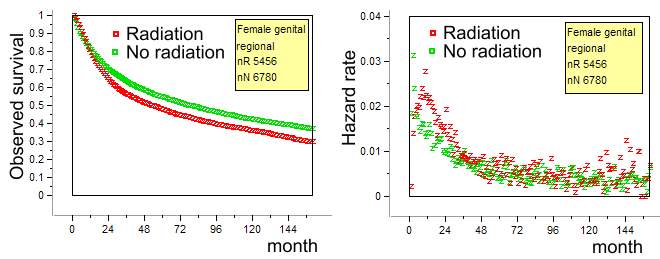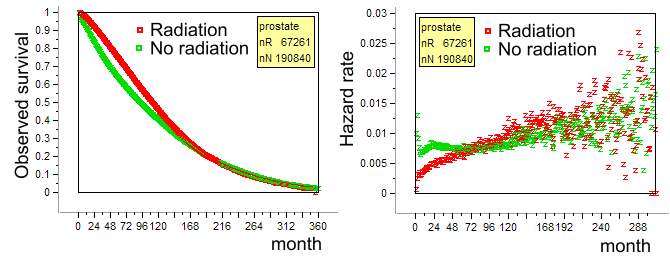Three years after the diagnosis of breast cancer the hazard
rate rises and later on it declines . This rise is attributed to treatment
and it is assumed here that since the woman depends somehow on her tumor
its removal initiates the rising hazard. This phenomenon is observed also
in female genital cancers where it is augmented by irradiation.
Data source
Surveillance, Epidemiology, and End Results (SEER) Program (www.seer.cancer.gov)
SEER*Stat Database: Incidence - SEER 9 Regs Public-Use, Nov 2004 Sub (1973-2002),
National Cancer Institute, DCCPS, Surveillance Research Program, Cancer
Statistics Branch, released April 2005, based on the November 2004 submission.
Results
The hazard rate of not irradiated women follows the bi-modal
pattern described in the previous study, and it is augmented by radiation.
This radiation effect provides additional and independent support for the
present hypothesis that the cancer patient depends on her tumor. Since radiation
destroys the tumor more efficiently than other treatments the post radiation
hazard is higher then in non irradiated women.
 |
Legend: nR = number of irradiated. nN = number of not-irradiated
The hazard in non irradiated prostate cancer patients is bi-modal. In irradiated patients the hazard is initially low and rises slowly. due to the late effects of radiation since it destroys healthy tissues in the vicinity of the irradiated organ.
 |
Conclusions
These computations provide additional and independent support for the hypothesis
that the woman with cancer depends on her tumor. Irradiation
of female genital cancers is not advised.